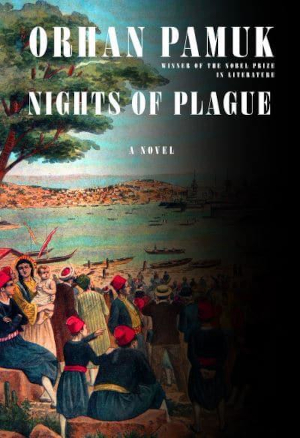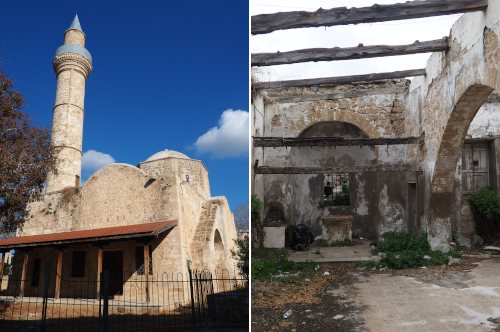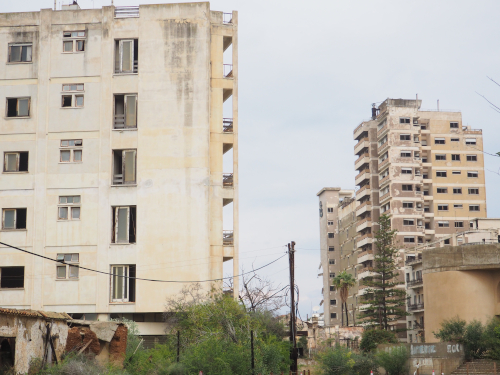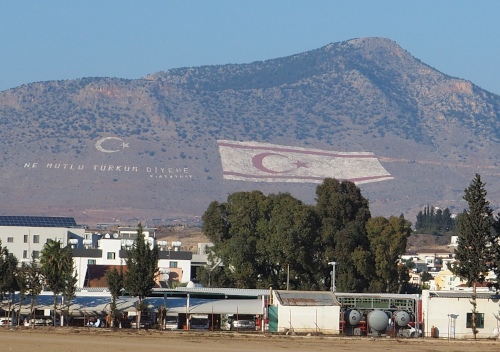
Reflections on Vancouver, British Columbia and other topics, related or not
East, West—or neither
Mingheria’s Turks and Greeks adopt artificial nationalism.
Those of Cyprus seem destined for multiculturalism
Greg Klein | February 10, 2023
The island of Mingheria, “pearl of the Eastern Mediterranean,” is a fictional creation by Orhan Pamuk and a fictional ideal of his story’s characters. Its precarious position between East and West shows in conflicts between Turkish and Greek residents, and rivalries between the Ottoman Empire and European powers. All that’s magnified in 1901 by the Bubonic Plague.
Mingheria breaks away from Ottoman rule when a military officer deems independence necessary to stop Istanbul’s interference with plague remediation efforts. Delusion overtakes him as he imagines himself the founder of a great nation who’s reviving its ancient language and heritage. His feverish daydreams become the new country’s national mythology. Based largely on hagiographic accounts of the “Great Savior” and his wife (who actually married the soldier in hopes of escaping the island), the myths gain fervent acceptance among Mingherians. But even after a century of self-conscious nation-building, few citizens can speak more than a hundred or so words of the language, a central-Asian throwback that would-be revivalists failed to revive.
That’s just one of the ironies of this nation, an ersatz creation that nevertheless comes to embody the hopes of its inhabitants. Mingheria’s “a very small country where the emotions and decisions of individuals could often change the course of history,” Pamuk writes. His narrator considers this book “both a historical novel and a history written in the form of a novel.”
Passing through rule by an Ottoman pasha, the deluded “Savior,” a conniving sheikh, an opportunistic dervish and a more firmly entrenched demagogue, the country also gains a royal family headed by Pakize, an ethnically and linguistically non-Mingherian daughter of a deposed Turkish sultan. Her varying circumstances throughout the story emphasize related themes of seclusion, exile, isolation and imprisonment.
Yet for Pakize, for her husband and to some extent for the story’s narrator, Mingheria embodies liberty. Mingheria itself becomes an ideal that transcends divisions of Muslims and Christians, Turks and Greeks, superstition and science, defeatism and optimism. Liberty becomes an ideal that transcends confines of personal life that may be material or abstract, real or imagined. But Mingherian national identity remains elusive, maybe unattainable, outside the country’s artificially created mythology, history, culture and pageantry. So does liberty, all the more so when people submerge personal identity into group membership.
Before consolidating themselves as Mingherians, the island’s Turks feared that Greek residents and/or foreign powers would use the plague as an excuse to swing sovereignty to Greece. Located about halfway between Rhodes and Crete, Mingheria was prone to the 19th- and early 20th-century series of foreign-aided takeovers by Greece of former Ottoman islands, usually about 10-to-one Greek-speaking, according to Pamuk.
Outside of the story, the Aegean-Mediterranean Turk-to-Greek island transfers and corresponding religious expulsions have almost completed. (The expulsions were based on religion not ethnicity, which could be a complicated mix. But even when it might be determined, ethnic Turks who spoke no Greek were sent to Greece on the basis of their Orthodox faith, crossing paths with Greek Muslims shoved in the opposite direction. In pre-Confederation and early Canada, the Catholic-Protestant divide mattered more than language.)
The last islands went to Greece after the WWI Ottoman defeat. An exception was Rhodes, delayed by Italian occupation until after WWII.
That leaves Cyprus as the last major island with an unresolved Greek-Turkish dispute. British control since the 1870s and British sovereignty after WWI might have placated the Greek Cypriot majority with the impression that Westminster would eventually agree to Enosis, union with Greece. But by the 1950s Greek-speaking extremists reverted once again to violence, against Brits as well as Turks. At one point Turkey’s military intervened to protect the island’s minority.
Britain granted independence in 1960 under a complicated power-sharing constitution, but Turkish-speakers soon pulled out of the bi-cultural ruling process. Hostilities flared up from time to time before a bungled 1974 Enosis-supporting coup, backed by the Athens military junta and allegedly the U.S., provoked invasion by Turkey.
Demographic cleansing resumed, with Turkish-speakers streaming north and Greek-speakers south across the newly demarcated border. In 1983 the north officially declared itself a separate nation, the Turkish Republic of Northern Cyprus. No other country recognizes it but Turkey.
The shuttered Moutallos Mosque in Paphos, southern Cyprus, and the
derelict Our Lady of Chrysopolitissa in Girne (Kyrenia), northern Cyprus.
(All photos by Greg Klein)
Lack of international acknowledgement makes it easy for the south’s “real” Republic of Cyprus to dismiss the TRNC’s existence as a temporary aberration that must end with reunification. But even a visitor might consider reunification as elusive as Pakize’s quest for liberty.
One vexing problem would be property. Who owns what, after newcomers on both sides of the border moved into homes, farms and businesses vacated by exiles nearly half a century ago? The problem even applies to unoccupied property, demonstrated on a grand scale in Varosha (aka Maras), once a Greek-speaking suburb in northern Cyprus that’s been abandoned since 1974.
Evacuated during the 1974 Turkish invasion,
Varosha remains a ghost town suburb.
Its dilapidated neighbourhoods of dilapidated streets with dilapidated buildings, once hotels, luxury homes and businesses, present an eerie scene as early-1970s concrete structures crumble behind the advance of Mediterranean foliage. It’s claimed by Greek-speakers—the pre-1974 residents and business owners—and by Turkish-speakers who say Britain unjustly transferred at least some of the properties.
The entire suburb sits empty except for casual visitors, UN observers, bicycle-riding security patrols and, just outside the entrance, a Turkish garrison.
That’s Turkish. Not Turkish-Cypriot.
On both sides of the border, national symbolism expresses mother-country loyalties. One flag resembles that of Greece, the other Turkey. A huge inscription carved into a mountainside just north of Nicosia quotes Mustafa Kemal, the father of modern Turkey: “How happy is the one who can say ‘I am a Turk.’”
“How happy is the [Cypriot] who can say ‘I am a Turk.’”
A few holdouts remain on each side of the Attila Line separating the two solitudes. Calls to prayer from the Omeriye Mosque (formerly the Augustinian Church of St. Mary) indicate a Muslim presence in the Greek-speaking side of Nicosia. But those answering appear African more often than Turkish-Cypriot.
North of the border, Turkish-Cypriots comprise a minority in their own country. They’re outnumbered by mainland Turks and Kurds, and more visibly by African and Asian students, refugees and guest workers.
So what is this island’s future—Greek-Turk division, Greek-Turk coexistence or multiculturalism?
So often in the past Western elites intervened for Greeks to the detriment of Turks. Should the multicultural West finally try to resolve this conflict, the outcome might benefit neither side. Then again, either or both sides might arrive at such an outcome independently.



